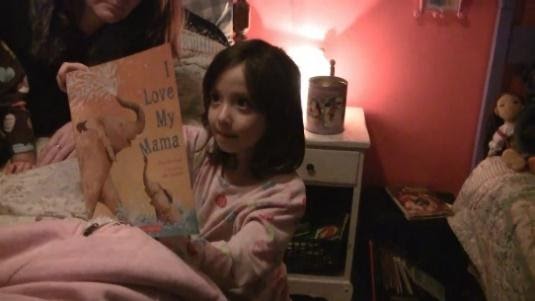
We apply our theoretical and methodological techniques in the study of cognitive development to focus on testing a theory of the processes in the emergence of literacy skills, specifically in written expression. We posit the necessity for novice writers to acquire the capacity to anticipate what a reader must know in order to understand a text and for effective writers to provide requisite background information in order to be understood by their readers. We see this metacommunicative awareness as critical to the “recontextualization” process implicated in efficacious writing and reading. This research, supported by SSHRC, has recently been conducted in collaboration with colleagues and students at the University of New Brunswick, Western University, Simon Fraser University, the University of Lancaster, UK; and the University of Florence, Italy.
• Cameron, C.A., & Pinto, G. (2019). Literacies as contexta: Notational acts during A Day in the Life. Interchange, 51(1), 9-24. https://doi.org/10.1007/s10780-020-09387-0
• Heydon, R., Stooke, R., Cameron, C.A., Cooper, E., & O’Neill, S. (2019). Making visible the literacy practices of elders through the Day in the Life methodology: Considerations for literacy education across the lifespan. Literacy, 54(2), 60-68. https://doi.org/10.1111/lit.12208

• Gillen, J., & Cameron, C.A. (2018). Capítulo 3: A importância do vídeo etnográfico no projeto Um Dia na Vida um caso de castores e cidadania. In: C. Stella & C.A. Cameron (Eds.), Psicologia do Desenvolvimento – “Um Dia na Vida” de Pessoas Bem-Sucedidas – Metodologia da Pesquisa Audiovisual em Psicologia Transcultural, Educação e Comunicação (pp. 35-43). Juruá. (English translation: The importance of video-centred ethnography in a Day in the Life project: A case of beavers and citizenship.)
• Gillen, J., & Cameron, C.A. (2017). Negotiating citizenship: A young child’s collaborative meaning-making constructions of beavers as a symbol of Canada. Language and Education, 31(4), 330-350. https://doi.org/10.1080/09500782.2017.1302466
• Cameron, C.A., Pinto, G., Hunt, A.K., & Léger, P-D. (2015). Emerging literacy during a ‘Day in the Life’ in transition to school. Early Child Development and Care, 186(9), 1476-1490. https://doi.org/10.1080/03004430.2015.1105800
• Cameron, C.A., Hunt, A.K., Pezzica, S., Phillips, L., Heydon, R., & Kumpulienen, K. (2014). Children shaping their identities as readers and writers: A Day in the Life of children in transition to school. Childhood Explorer, 1(4), 22-25.

• Cameron, C.A., & Gillen, J. (2013). Co-constructing family identities through young children’s telephone-mediated narrative exchanges. First Language, 33(3), 246-267. https://doi.org/10.1177/0142723713487611
• Leger, P.-D., & Cameron, C.A. (2013). Meaning construction in early oral reading. Journal of Research in Childhood Education, 27(4), 454-471. https://doi.org/10.1080/02568543.2013.823898
• Kubiliene, N., Gouliquer, L., Hunt, A., Shandik, S., & Cameron, C.A. (2013, October). Lessons learned from a “Day in the Life” of a thriving older adult [Paper presentation]. Conference of ESREA (European Society for the Research on the Education of Adults) Network on Education and Learning of Older Adults, Mykolas Romeris University, Vilnius, Lithuania.
• Cameron, C.A., & Hutchison, J. (2009). Telephone-mediated communication effects on young children’s oral and written narratives. First Language, 29(4),343-367. https://doi.org/10.1177/0142723709105313

• Cameron, C.A., & Pinto, G. (2009). Day in the Life Secure interludes with joint book reading. Journal of Research in Childhood Education, 23(4), 437-449. https://doi.org/10.1080/02568540909594672
• Pinto, G., Accorti Gamannossi, B., & Cameron, C.A. (2009). From scribbles to meanings: Social interaction in different cultures and the emergence of young children’s early drawing. Early Child Development and Care, 179(8), 1-19. https://doi.org/10.1080/03004430903442001
• Pinto, G., Accorti Gamannossi, B., & Cameron, C.A. (2006). Alfabetizzazione emergente in “Un giorno nella vita” [Emergent literacy in a “day in the life”]. Rassegna di Psicologia, 23(3), 79-92.
• Pinto, G., Accorti Gamannossi, B., & Cameron, C.A. (2006). Joint book reading: Socialization of literacy in cultural perspective. International Journal of Ideographic Science. 4. http://www.valsiner.com/articles/pinto.html

• Gillen, J., Accorti Gamannossi, B., & Cameron, C.A. (2005). ‘Pronto, chi parla? (Hello, who is it?’) telephones as artefacts and communication media in children’s discourses. In J. Marsh (Ed.) Popular culture, media and digital literacies in early childhood (pp. 146-162). Routledge Falmer.
• Cameron, C.A., & Wang, M. (1999). Frog, where are you? Children’s narrative expression over the telephone. Discourse Processes. 28(3), 217-236. https://doi.org/10.1080/01638539909545082
• Lee, K., Karmiloff-Smith, A., Cameron, C.A., & Dodsworth, P. (1998). Notational adaptation in children. Canadian Journal of Behavioural Science. 30(3),159-171. https://doi.org/10.1037/h0087059

• Cameron, C.A., Edmunds, G., Wigmore, B., Hunt, A.K., & Linton, M.J. (1997). Children’s revision of textual flaws. International Journal of Behavioral Development, 20(4), 667-680. https://doi.org/10.1080/016502597385117
• Cameron, C.A., Hunt, A.K., & Linton, M.J. (1996). Written expression as recontextualization: Children write in social time. Educational Psychology Review, 8(2), 125-150. https://doi.org/10.1007/BF02160677
• Cameron, C.A. (1996). Making a place for social cognitive processes in writing development. Issues in Education, 1(2),171-176.
• Cameron, C.A., & Moshenko, B. (1996). Knowledge transformation in children’s narrative writing. Canadian Journal of Behavioural Science, 28(4), 271-280. https://doi.org/10.1037/0008-400X.28.4.271
• Cameron, C.A., Lee, K., Webster, S., Munro, K., Hunt, A.K., & Linton, M.J. (1995). Text cohesion in children’s narrative writing. Applied Psycholinguistics, 16(3), 257-269. https://doi.org/10.1017/S0142716400007293
• Cameron, C.A., Hunt, A.K., & Linton, M.J. (1988). Medium effects on children’s story rewriting and story retelling. First Language, 8(1), 3-18. https://doi.org/10.1177/014272378800802201